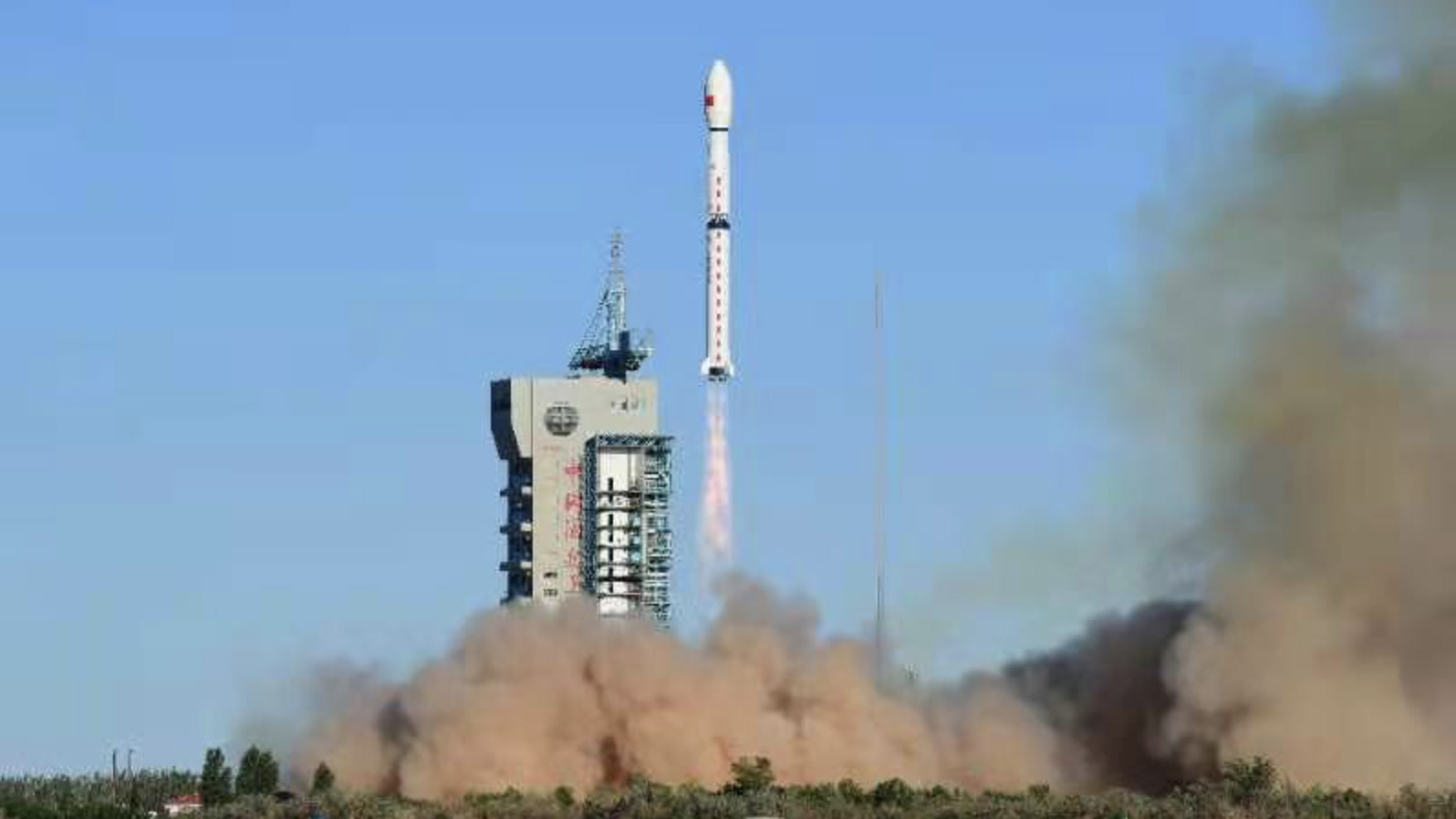00:26

China launched a new meteorological satellite, Fengyun-3E (FY-3E), into planned orbit from the Jiuquan Satellite Launch Center in northwest China on Monday.
Blasted off at 7:28 a.m. Beijing time by a Long March-4C carrier rocket, the satellite is equipped with 11 advanced remote sensing payloads, with a designed lifespan of eight years.
The satellite will mainly obtain data about temperature, humidity, and other meteorological parameters for numerical prediction applications, improving China's weather forecast capabilities.
The satellite will also monitor the global snow and ice coverage, sea surface temperature, natural disasters, and environment to better respond to climate change and prevent and mitigate extreme weather events.
It will also monitor solar and space environments and their effects on Earth. In addition, the satellite will help collect ionospheric data to meet the needs of space weather forecasts and supporting services.

A Long March-4C rocket carrying the FY-3E satellite lifts off from the Jiuquan Satellite Launch Center in northwest China, July 5, 2021. /China Media Group
A Long March-4C rocket carrying the FY-3E satellite lifts off from the Jiuquan Satellite Launch Center in northwest China, July 5, 2021. /China Media Group
Filling in the gap of meteorological satellite observations at dawn
The FY-3E satellite is dubbed as a "dawn satellite," as it will serve to glean meteorological observations in the early morning.
It is also the world's first meteorological satellite for civil service in a dawn-dusk orbit.
A dawn-to-dusk orbit is a sun-synchronous orbit in which the satellite tracks but never moves into the Earth's shadow. Since the satellite is close to the shadow, the part of Earth the satellite is directly above is always at sunset or sunrise, giving the orbit its name.
It will constellate with FY-3C and FY-3D satellites in orbit, making China the only country in the world that has succeeded in networking meteorological satellites positioned at three different trajectories. Such networking helps in data collections for predicting weather in the dawn, morning and afternoon.
The networking can scan the globe six times a day, obtain global meteorological data within four hours, and enhance early weather forecasting time by 12 hours.
In the future, the observation data of FY-3E will be available to the whole world, which will improve the accuracy and efficiency of global numerical weather prediction, and is of great significance to the improvement of global Earth observation.
Fengyun-3E is the 377th flight mission of the Long March carrier rocket series.
(With input from Xinhua News Agency)

